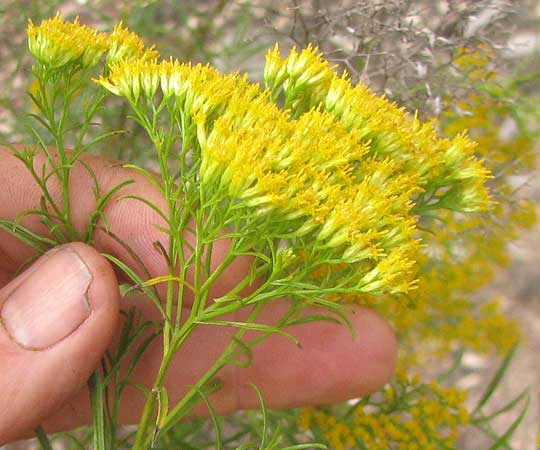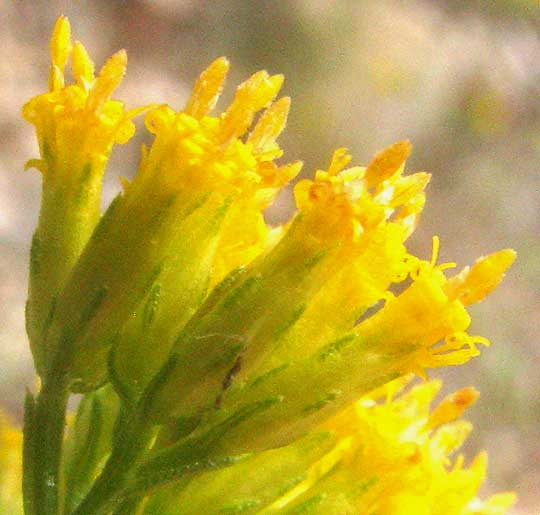Excerpts from Jim Conrad's
Naturalist Newsletter

from the November 3, 2013 Newsletter issued from the Frio Canyon Nature Education Center in the valley of the Dry Frio River in northern Uvalde County, southwestern Texas, on the southern border of the Edwards Plateau; elevation ~1750m (~5750 ft); N29.62°, W99.86°; USA
GOLDENBUSH
From a rocky roadcut grew what was obviously a species of belly-high goldenrod I hadn't seen before, except that I'd never seen a goldenrod this woody. That's it above.
Up close the composite-type flowering heads showed themselves as arranged in flat-topped, cyme-type clusters, seen below:

Even closer, however, something turned up that I'd never seen in a goldenrod. See if you can spot the disconcerting feature, too, below:

The goldenrod species I've known had yellow, petal-like ray flowers around the margins of their flowering heads, with cylindrical disc flowers in the center, but the heads in the last picture consist only of disc flowers. Also, it's unusual how disc flowers about to open rise above the open flowers, looking almost like praying hands.
So, our plant isn't a goldenrod, but rather it's a goldenbush or goldenweed, sometimes called a Jimmyweed, genus Isocoma of the Composite or Sunflower Family. Isocoma species occur only in arid zones of the US southwestern states and Mexico.
Our roadside Goldenbush is ISOCOMA CORONOPIFOLIA, described as occupying alkaline sandy flats and shrublands in arid northeastern Mexico and adjacent southwestern Texas.
Not much literature is available on this species. It's just a pretty bush that ought to be in front of people's houses in lands where it's too dry for grassy lawns.